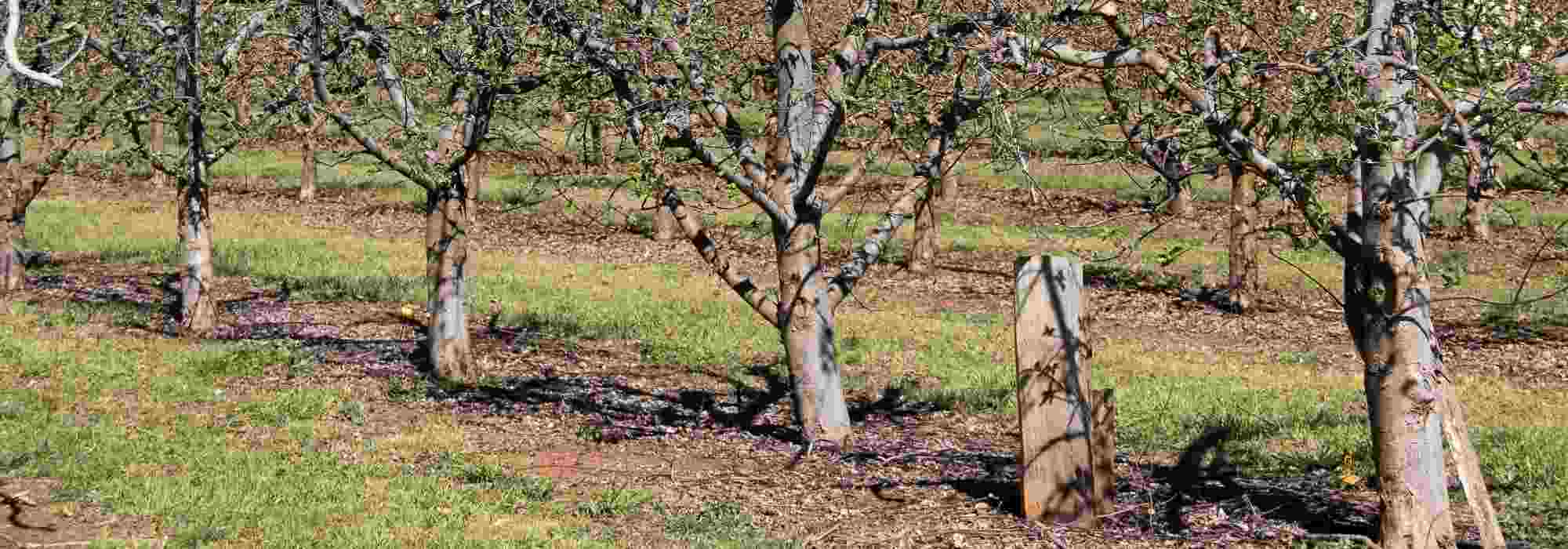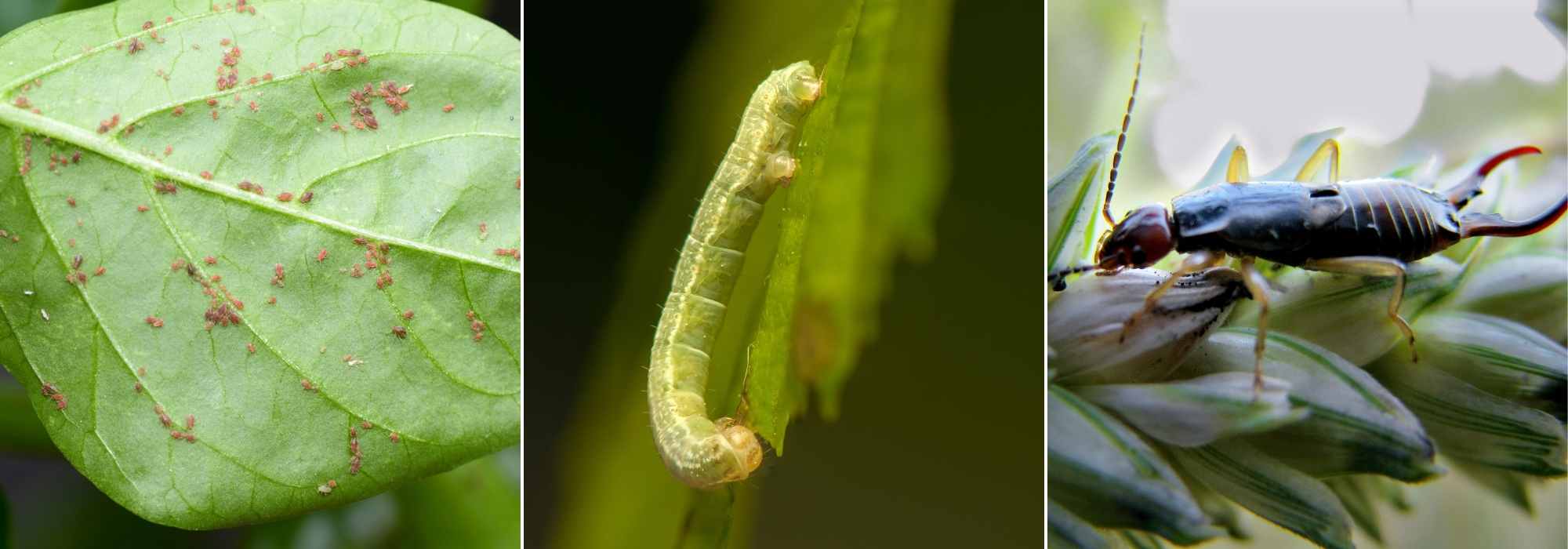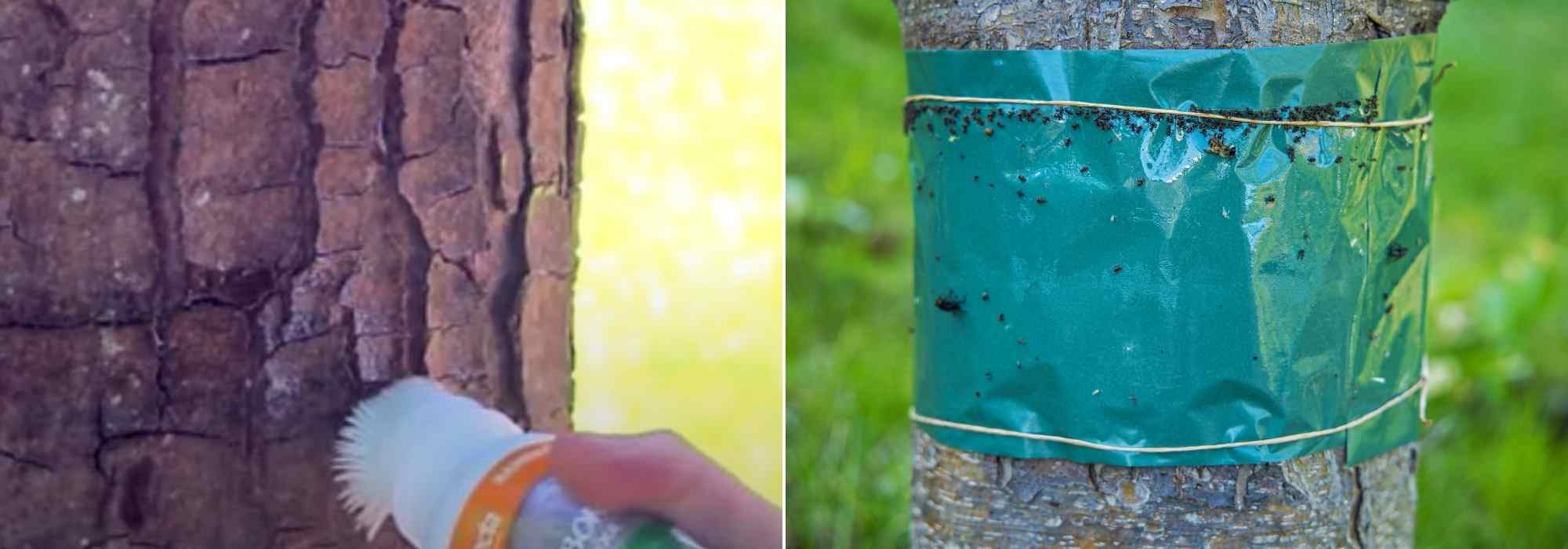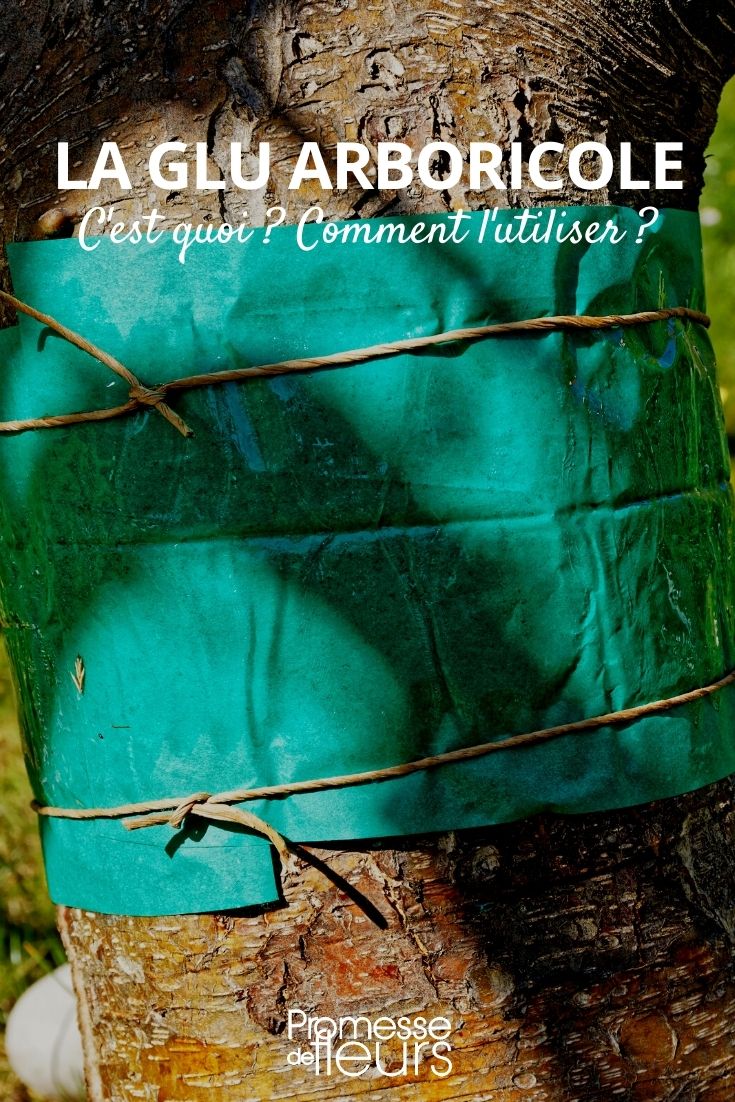
Arboricultural glue
A natural alternative to pesticidals
Contents
Mainly used in orchards, tree-band glue is an alternative to pesticidal treatments against certain pests harmful to fruit trees. This product also has the advantage of not poisoning your garden and its small inhabitants! Easy to use, it nevertheless requires some precautions to avoid harming garden wildlife or the tree itself. Discover our tips to shed light on this natural barrier and care for your trees.
What is tree glue?
As its name suggests, arboricultural glue is an adhesive applied to the trunk of a tree (most often a fruit tree) to trap or deter pest insects by mechanical rather than chemical means. It is applied as a paste, gel, spray or self-adhesive vittae to form a protective ring around the trunk of the tree to prevent unwanted insects from climbing up.
Note: Arboricultural glue should not be confused with limewash applied to trunks in warm countries, which turns trunks completely white.
What pests does it target?
Arboricultural glue is mostly used against harmful insects on fruit trees and sometimes ornamentals. It is very effective against aphids indirectly. Indeed, ants can no longer climb the tree to protect aphids from predators, so aphids become more vulnerable to attacks by ladybirds. This substance therefore helps beneficial insects to fight these pests more effectively.
Note that ants defend aphids to obtain honeydew (sweet liquid) that aphids excrete after sucking plant sap.
It is also used against several species of caterpillars that attack fruit trees, such as cheimatobie of fruit trees (leaf-eating) or the horse-chestnut leaf miner which has been ravaging that tree for several years.
Finally, while earwigs are often considered gardener’s friends, they can sometimes attack fruit during seasonal outbreaks. Glue will regulate their population before fruit ripening.

Arboricultural glue protects against aphids, cheimatobie of fruit trees and earwigs
When to use it?
Application period (preventive) depends on pest causing damage and on its biological cycle:
- Aphids: emergence of aphids generally begins in April. Place glue towards end of March;
- Cheimatobia caterpillars and horse-chestnut leafminers: from October to March;
- Earwigs: as these favour fruit, recommend placing trap at least 1 month before harvest;
- Processionary caterpillars: application can be carried out from late February depending on weather.
To be renewed at end of period of effectiveness.
How to apply arboricultural glue?
It is used either as strips or as glue applied by hand, with a brush or even by aerosol. There are even bottles with an applicator brush. Principle is the same each time: apply glue to create a protective ring preventing insects from climbing.
Application of paste-form tree glue : recommended for fruit trees
- Apply by hand after dipping hands in soapy water
- Take a ball the size of an apple then form a strip 30 to 5 cm high, stretching it until it can be wrapped around trunk at about 30–40 cm from soil;
- Cut off excess glue;
- Place hands on strip, pressing all around trunk to reinforce adhesion;
⇒ Effective for 8 to 12 weeks
Application of the gel-form tree glue : suitable for cracked bark
- Wear a pair of gloves (glue is not toxic but is very sticky);
- Using a semi-stiff bristle brush or a spatula, apply glue (do not dilute, or add up to 4% linseed oil if you need to make it more fluid) in a layer up to 10 cm high around entire circumference of trunk, at about 80 cm from soil, taking care to clear base of tree.
- Form a ring of about 10 cm around trunk or at base of main branches in case of a tree with several trunks near the ground.
⇒ Renew after 4 to 6 weeks
There is also gel glue with applicator bottle for easier application.
Application of the natural tree glue
Proceed as for gel-form glue.
⇒ Effective up to 5 weeks
Note that brush cleans easily with very hot water.
Application of the aerosol-form tree glue : ideal for ornamental trees and bushes
- Shake aerosol vigorously;
- Give short bursts (no prolonged spraying) from about 30 cm from area to be sprayed, until you form a glue strip up to 10 cm wide across full diameter of trunk, at 1 m from soil;
- Make a second pass 24 hours later for better protection.
⇒ Effective for about 6 weeks
Installation of a glue strip : most practical
- Cut then position length of strip equal to diameter of tree to be protected;
- Fix it firmly with a tie, taking care to leave 1 cm margin to fold top of strip over tie so rainwater does not seep between trunk and strip.
⇒ Change strip every 3 to 5 weeks

Applying glue with a brush or as strips
How to remove tree glue?
Tree glue is very difficult to remove, which is why we prefer strips, easier to use.
Our tips
- Note that effectiveness period is directly related to saturation of glue band with wind‑blown dust and insects; renew as soon as necessary.
- If applying glue to a very young tree, avoid smearing product directly onto bark as bark may not tolerate it. Press a cloth firmly against trunk and apply glue to cloth instead.
- Tall herbs can act as bridge for harmful insects, so mow around base of trees.
- Avoid also applying it to graft point on fruit trees (this area being more sensitive).
- Be very careful regarding birds and small mammals by never applying this product to a horizontal branch!
- Beware small garden rodents! Dormice, garden dormice or other squirrels can become entangled in or injured by glue. If your garden is refugium for any of these species, use product sparingly and only in case of extreme emergency in your orchard. Best not to apply it to old specimens with cavities where these small hosts of our gardens might take shelter.
- Subscribe!
- Contents
































Comments